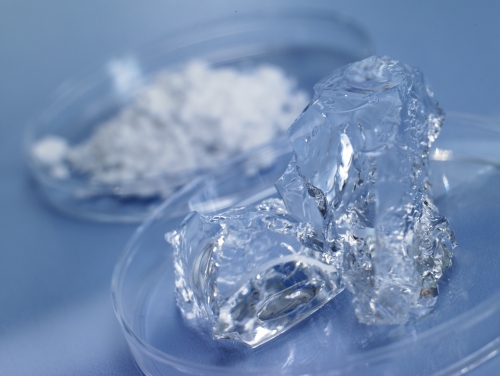
Protection of the Ocular Surface
The shear forces of blinking and several external factors—air conditioning, low air humidity, smoke, foreign matter, and microorganisms can harm the ocular surface. All of the factors listed can induce ocular surface issues, which can be responsible for symptoms of ocular discomfort and interfere with the quality of sight.

HA solution helps reduce discomfort and eye fatigue. It is well known that HA is one of the ingredients of human tears. Viscoelastic HA solutions were shown to be effective in treating patients with dry eye conditions and also increased the comfort of patients wearing contact lenses. The first HA-containing eye drops (0.15%) available for patients with keratoconjunctivitis sicca was Hylashield® (Biomatrix, Inc.), which can be used as a wetting agent for the cornea during surgery.
Wound Healing – Protection of the Skin and Oral Tissues
The role of HA in the granulation phase of sterile skin wound healing was first studied by Balazs Endre A. in the late 1940s. An accumulation of hyaluronan was observed during the early stage of healing. The putative role of native HA during all four phases of wound healing (inflammation, granulation, re-epithelialization, and re-endothelialization) has been studied in the healing of skin and corneal wounds and also in nerve regeneration.
HA and Oral Ulcer
Recurrent aphthous ulceration (RAU) is the most common type of oral ulceration, which affects approximately 20% of the population. A clinical trial was performed to evaluate the efficacy of topical HA. Both topical HA and placebo induced a significant reduction in ulcer soreness immediately after application, but patients treated with HA solution recorded fewer ulcers on day 5 after the management than those treated with placebo. In addition, the reoccurrence rate of ulcers was lower in the HA group compared with placebo. This result suggested that topical HA may be of benefit in the treatment of RAU.
HA and Periodontitis
HA plays several important roles in cell adhesion, migration, and differentiation as an essential component of the periodontal ligament matrix. Furthermore, HA possesses the ability to absorb water and exert pressure on the surrounding tissue, expanding the extracellular space. This means HA also has the function of buffering bite force on the periodontal ligament.
HA-based products are needed for gingivitis and periodontitis therapy owing to their anti-bacterial and anti-inflammatory effects. Clinical research suggested that the application of HA to periodontal sites could have a favorable effect on periodontal healing and surgery, hence aiding in the treatment of periodontal disease.
Drug Delivery
Owing to the mucoadhesive property and safety of HA, it has received much attention as a drug delivery tool in both non-parenteral (including ocular, nasal, pulmonary, and topical delivery systems) and parenteral routes. Moreover, HA-based medicine shown sustained-release properties when used in parenteral systems through subcutaneous injection.

Particles and hydrogels made by HA or HA derivatives as well as by conjugation with other polymers have been studied. HA can be used as a cancer-targeted drug because of the affinity of HA to the CD44 receptor, which can be over-expressed in various tumor cells.
